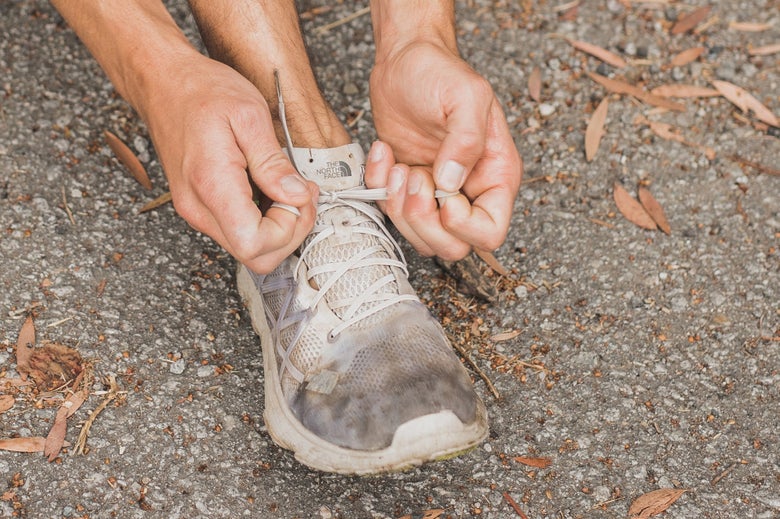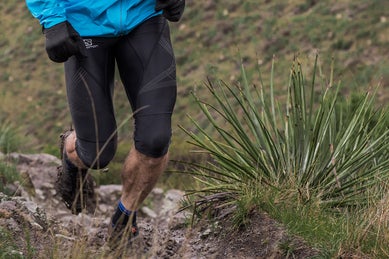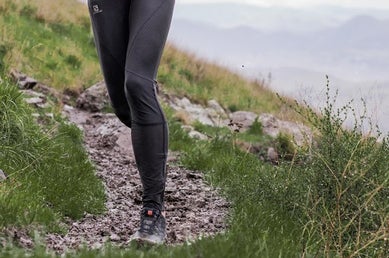How to Make Your Running Shoes Last Longer
7 Tips on How to Get the Most Out of Your Shoes
Updated: October 19, 2023

Unlike fine wine or cheese, running shoes don't get better with age. No matter how masterfully crafted a running shoe is, your favorite running shoes will eventually wear out. Luckily, there are steps you can take to prolong the inevitable, keeping your favorite running shoes out of retirement for a bit longer. All it takes is a little care and know-how to extend your shoe's lifespan. No matter if it's a carbon-plated marathon racer or your go-to daily training shoe, these tips offer you the knowledge to keep your running shoes feeling energetic and spry for as long as possible.
Tip #1: Be Mindful When Putting On and Taking Off Your Shoes
We are all guilty of crushing the back of our shoes as we rush out the door or stepping on the heel to pull them off without untying the laces first. Even though it is tempting to grab and go when we are racing to make that group run, these actions can reduce the life of our running shoes. Every time you wear or remove your shoes, the material in the upper stretches to conform to your foot. This repetitive motion over a period of time can cause the upper to lose its shape and structure, leading the shoe to fit poorly as opposed to when you first got it.
It's important to slow down and purposely take the time to put on and take off your shoes properly. Be sure to loosen the laces and gently leverage your foot into or out of the shoe. This will help keep the uppers in top shape so they can continue to fit and perform well for as long as possible.
Tip #2: Use the Right Shoe for the Right Job
Sometimes, the one-size-fits-all ideology doesn't work for every runner and every run. Most running shoes are designed to accomplish a specific purpose. Whether it's a daily training shoe, racing shoe, or trail running shoe, there are many different styles of running shoes to choose from. These purpose-specific designs can lead to a shoe wearing out more quickly when not used as intended.
Specifically, running shoes are designed for linear, heel-to-toe movement. Using these shoes for cross fit and other non-running activities can lead to the shoe's midsoles and outsoles wearing down unevenly. In addition, each style of running shoe has a rubber compound that's finely tuned to tackle the different kinds of ground conditions. Trail shoes have a soft rubber with a lugged design that allows them to grip rocks and soil. However, using a trail shoe on the road can lead to the lugs wearing out much faster. In the same way, a carbon-plated super shoe cannot offer enough durability and comfort to tackle everyday use. Using the right shoe for the right job can keep your shoes from biting the dust when you need them the most.
Tip #3: Properly Fitting and Lacing Your Shoes
Having the right fit in your running shoes can go a long way toward the longevity and comfort of the shoes for your feet. It is imperative to get the right fit that is not too tight yet not too loose. Wearing the wrong size can lead to the decline of the upper or midsole due to excessive friction from your foot or an improper running gait. If you need help finding the right size or fit, be sure to check out our shoe fit guide or have our expert staff assist with an online gait analysis.
Lacing plays another factor in making your shoes last longer. Improper lacing can lead to excessive heel movement or a loose fit, leading to more wear and tear on the upper materials. Using different lacing styles can help with dialing in a secure and comfortable fit. The correct tension will help prevent that extra friction from rubbing away materials and keep your foot locked down throughout your runs or walks.
Tip #4: Store Shoes in Moderate Temperatures
Excessive exposure to heat, sun, and humidity can quickly degrade running shoes, damaging the materials, causing parts of the shoe to delaminate, and sun-bleaching the upper. Exposure to heat may also cause the upper material to shrink, changing the fit and comfort of your running shoe. In addition, improper storage where water can sit in your shoes over an extended time can cause the midsole to break down more quickly due to extra moisture trapped in the shoe.
If you're wondering what we mean by "excessive exposure to heat," avoid storing your shoes in temperatures where you would find yourself too hot. For example, would you hang out for a couple of hours in the trunk of your car if it were 100°F outside? Then you probably shouldn't store your shoes in there. In the same way, if your shoe gets drenched with water, move them to a place where they can dry out quickly.
Tip #5: Clean and Dry Shoes Properly
Your running shoes won't necessarily break down faster if they aren't kept clean, but cleaning and drying shoes improperly can be damaging despite the good intentions behind it. When cleaning your shoes, be sure to use shoe-specific washes that won't damage the glues or midsole materials, and while you may have heard that you can throw your running shoes in the dryer, it's best to allow shoes to air dry completely to avoid exposure to excess heat.
After cleaning shoes, leave them out to dry in a shaded area with the sock liner removed. In humid conditions, you can help speed the drying process by stuffing a few sheets of paper towels into the cavity to absorb excess moisture. For bad-smelling footwear, consider using an anti-oder product to help reduce the possibility of bacterial growth. We offer a wide selection of shoe care items to help keep your footwear fresh and clean.
Tip #6: Replace Your Insoles
In addition to watching the midsole foam built into the shoe, it is critical to factor in the insole within. Insoles pair with the midsole for additional comfort and support underneath your foot. Once the insoles no longer provide the cushioning, you can notice a drop in the shoe's comfort. Replacing these bottomed-out insoles can rejuvenate and prolong the comfortability of your shoe, and changing out old insoles can also decrease the build-up of bacteria in the shoe to give you a fresh step to prolong your shoe's lifespan.
Tip #7: Alternate Your Shoes
Two is always better than one! Rotating your running shoes offers several benefits and can help extend the life of your footwear and prevent possible injuries to your feet and legs. The foam in the midsole has the essential job of maintaining supportive cushioning and mitigating the impact of your foot hitting the ground during your running cycle. As you run, the foam in your shoe naturally compresses and, with repetitive usage over time, can weaken the support it provides. Without that support, the chances of getting injured on your run increase.
To reduce the chance of an injury and make the cushioning in your shoes last longer, it is important to rotate your primary shoes with at least one other pair. Having another pair of running shoes will allow time for the foam to recover and rebound back to its original supportive state. Rotating your shoes also gives them time to dry out, especially if you run in a wet or humid climate where your shoes are often saturated.
It is also important to know when to eventually replace your dedicated running shoes. Once the foam can no longer support your foot, it is time to let the shoes go.





